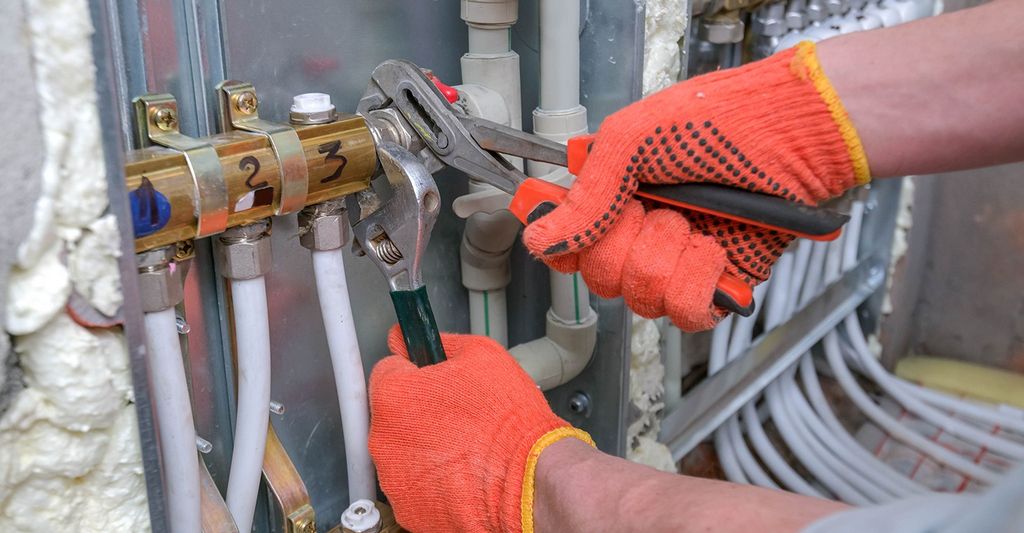Who fixes furnaces?
If your furnace needs to be repaired, you’ll want to find a qualified heating, ventilating and air conditioning (HVAC) repair technician. Each state has its own licensing requirements; some require all HVAC technicians to have an HVAC license, while others only require someone operating an HVAC service and installation company with employees to hold a contractor’s license. For example, in Alabama, the Alabama Board of Heating Air Conditioning, and Refrigeration Contractors regulates licensing, while in Kansas there is no state regulatory body and HVAC licensing can vary by region. For simple furnace repairs like changing out a filter, a trusted handyman can probably handle the job, but a trained professional should be hired for tasks like replacing a gas valve, installing a new inducer fan motor or other critical furnace repair jobs that involve dealing with gas leaks or other dangerous conditions. For more, check out our tips for smart hiring on Thumbtack.
What does a new furnace cost?
Heating typically constitutes 42 percent of a homeowner’s utility bill, according to Energy.gov. If your heating bills are through the roof, it might be time to compare what you’re spending on utility bills to the cost of a new furnace. A new furnace can cost between $1,000 and $2,700 for standard big-box forced-air furnaces, and more than $10,000 for advanced technology or high-end brands.
With a new furnace you could lower your total energy bill by 30 percent while also reducing your carbon footprint. To achieve these savings, Energy.gov recommends combining proper equipment maintenance, insulation, air sealing, strategic thermostat settings, and — of course — energy-efficient HVAC equipment. The furnace cost you’re facing may seem large upfront, but should save you money in the long term with improved home heating at a lower cost. Furnace cost is dictated by brand, efficiency, technology and the British thermal units (BTUs) needed to heat your home. AFUE is another important acronym. It’s short for annual fuel utilization efficiency, and it represents what percentage of the fuel becomes heat for the home. Energy.gov explains that an AFUE of 90 percent means 90 percent of the energy in the fuel is used to heat the home, and the other 10 percent escapes.
How much does it cost to have your furnace serviced?
When your furnace isn’t regularly serviced it can operate less efficiently. This increases your energy bills and also prevents your furnace from keeping your home as warm as you like. Keep your furnace properly maintained with regular service. The national average furnace service cost is between $60 and $80. Companies may offer tuneup specials that cover all the necessary testing, tightening, measuring and cleaning to keep your equipment running at top efficiency. If you have a newer system, furnace service costs may be covered by your warranty. Outside of warranty, a basic tuneup might start at $58 and a more advanced maintenance cleaning could be over $120. Here are some signs your furnace may need service:
- The furnace has stopped functioning entirely.
- The temperature cannot be regulated.
- Rooms in the home are either too hot or too cold.
- The heated air coming from the furnace smells like gas.
- The thermostat isn’t working.
- Strange noises are coming from the furnace.
How much does it cost to replace a gas furnace?
The cost to replace your gas furnace will vary based on the type and size of furnace you select, labor and installation costs, and any repairs your HVAC system may need. Nationally, average HVAC prices for a heating specialist range between $1,800 and $2,500. It’s important to select the right size gas furnace for your heating needs. A furnace that’s too small won’t heat your house properly, while a furnace that’s too large will run inefficiently, cycling on and off and likely breaking down sooner. HVAC specialists calculate your exact heat needs by measuring your home and incorporating variables such as the regional climate and your home’s level of insulation. Retail pricing for gas furnaces can range from $650 up to $3,000 and more. The higher the AFUE (annual fuel utilization efficiency) rating of the furnace, the more efficient it is at turning fuel into heat and the lower your carbon footprint and utility bill will be. HVAC installation costs are often based on an hourly rate and can range from under $50 to over $100 per hour, depending on the company and the furnace being installed. Higher-end furnaces cost more to install because they require added labor and expertise. For a typical installation, it might take two HVAC installation pros one day or less to remove your old furnace and replace it with a new one.
